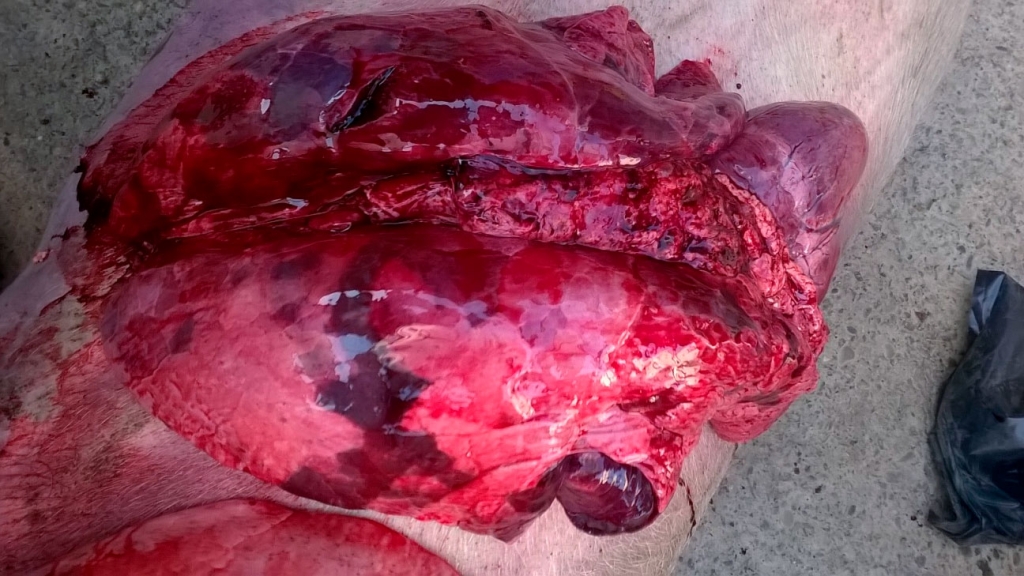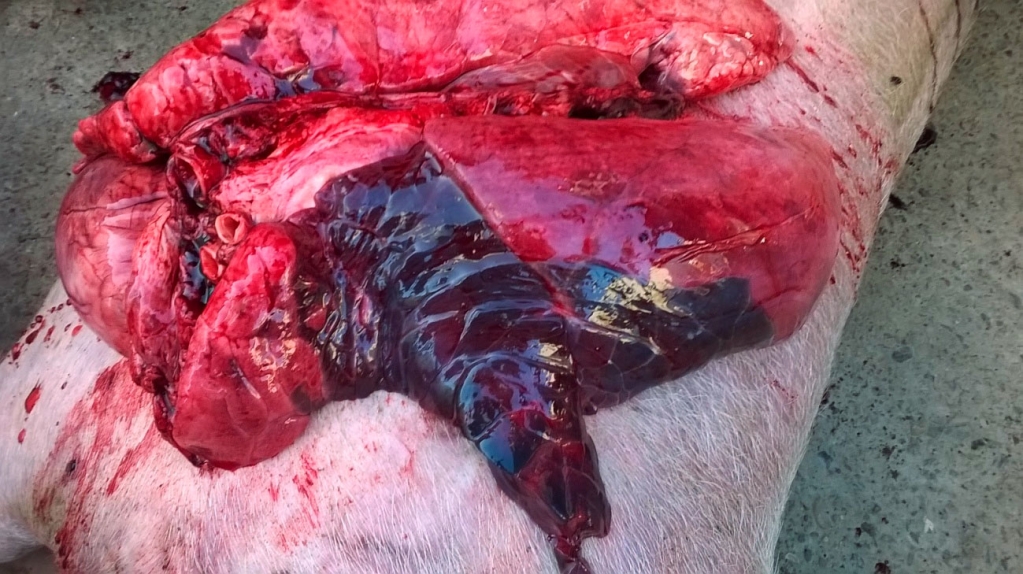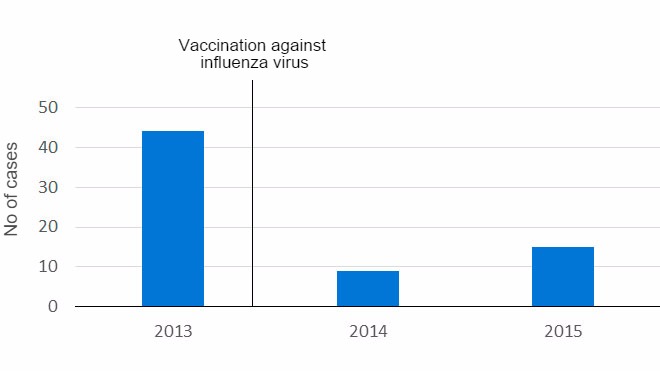This case study takes place in an integrated pig company with rearing systems in 2 sites (site 1: sows + piglets up to 18 kg LW, site 2: fattening units) and 3 sites (site 1: sows + piglets up to 6 kg LW, site 2: nursery and site 3: fattening units.)
Immunisation against swine influenza of pigs in multi-origin sites 3 in an area of central-eastern Spain with high concentration of fattening farms, the reasons that led us to the implementation of this vaccination schedule, and the results obtained are discussed in this paper.

Vaccination against influenza of all fatteners in the study area is decided after a history of recurrent respiratory signs, mainly concentrated in the last third of the fattening phase.
Origins of pigs in these fattening units and health status of farms of origin were variable.
Respiratory signs in finishig pigs were not linked to any specific source of piglets, but rather to a specific area and time of year; contrary to what might be expected, occurrences were both more numerous and more virulent in summer time.
Clinical picture and course
The signs most frequently seen included: onset in the last phase of fattening, acute fever, dyspnoea and cough. At first glance the signs matched an acute flu-like disease with high morbidity and low mortality. This was usually treated with antipyretic drugs and, in case of secondary bacterial infections, with antibiotics.
Clinical signs improved a few days after treatment, but against what might be expected in an acute flu-like dynamics, the clinical picture worsened 15-20 days later, albeit less widely spread.
Dyspnoea, cough, mild fever, loss of body condition and a drip of casualties due to secondary complications, all came back.
The animals were treated again and, in most cases, the condition became chronic and lasted until the end of fattening, with the consequent farmer's and technical staff members' burnout and negative impact on the global fattening results.
Necropsies showed, depending on the duration of the clinical picture, lesions compatible with influenza, Mycoplasma, PRRS or a mixture of all three. In some cases, lesions consistent with Pasteurella and other bacterial infections were also seen (photos 1 and 2.)


Photos 1 & 2: Necropsy lesions consistent with enzootic pneumonia, influenza, PRRS and other bacterial infections.

Serological analysis using ELISA showed high titers of M. hyo, influenza and PRRS. The titers were variable, depending on the dynamics and duration of the problem.
During the process, several samples of lungs, as well as some adult individuals, were sent to different laboratories in the Veterinary Faculty of Zaragoza for diagnosis.
Depending on the chronicity of the process, both influenza virus and PRRS virus were isolated in the laboratory.
Why was vaccination against influenza chosen?
Given these results, knowing that M. hyo, influenza virus and PRRS virus were involved in the vast majority of cases, and considering the repeatability of the problem in a particular area, we chose to act on one of the three agents always involved in the process.
The vaccine against M. hyo was dismissed because fatteners in the problem area didn't always have the same origin and, given the large number of breeding farms in the company, vaccination of all piglets would have had to be implemented, which was not part of our plan.
As for the other two agents, PRRS and influenza, the decision to act against the latter was made for 2 reasons: a lower cost, and the convenience of being able to combine its administration with that of the vaccine against Aujeszky's disease virus, greatly facilitating handling.
A vaccine was chosen that were compatible with Aujeszky disease virus vaccine and that included the influenza strains isolated in samples sent to the laboratory (H1N1 and H3N2.)
Results of vaccination against influenza
After vaccination in 2014, prevalence was seen to decrease by a high percentage compared to the years before vaccination: the occurrence of respiratory problems at the end of fattening decreased by 79.5% in 2014 and by 66% in 2015 (figure 1.)

Figure 1. Evolution of the number of cases with respiratory problems at the end of fattening before and after vaccination against influenza virus.
An example of the impact of respiratory clinical pictures on production and economic performance is shown below.
Table 1 shows the negative impact of respiratory problems on production parameters in two affected farms, along with their economic assessment with respect to the average fattening units located in other areas, in the same time period and with the same animal sources.
Table 1. Productive and economic results differential of two affected farms compared to the average fattening units with the same animal sources in other areas. Data for 18-to-100-kg-pigs.
| ↑ feed ingested | ↑ casualties | ↑ medication costs | ↑ Costs per fattener | |||
| g / kg LW | € / pig | % | € / pig | € / pig | € / pig | |
| Farm 1 (data from 2012) |
113 | 2.88 | 2.05 | 1,64 | 0.57 € | 5.09 |
| Farm 2 (data from 2013) |
62 | 1.73 | 3.50 | 3,33 | 0.79 € | 5.85 |
The economic impact of respiratory problems in the final cost of the fattened pig is about €5-6 extra per pig.
Conclusions
The conclusion we draw is that Mycoplasma hyopneumoniae acted as a gateway for the other two agents involved, leading to complications and chronicity of the respiratory signs. Trying to control influenza via vaccination, a reduction of respiratory signs was achieved and, most importantly, the tendency to chronification was halted, thus reducing antipyretic and antibiotic costs. Productive results have returned to the average values of other fattening units with the same animal sources, and thus the profitability of fattening units in the area has improved.





